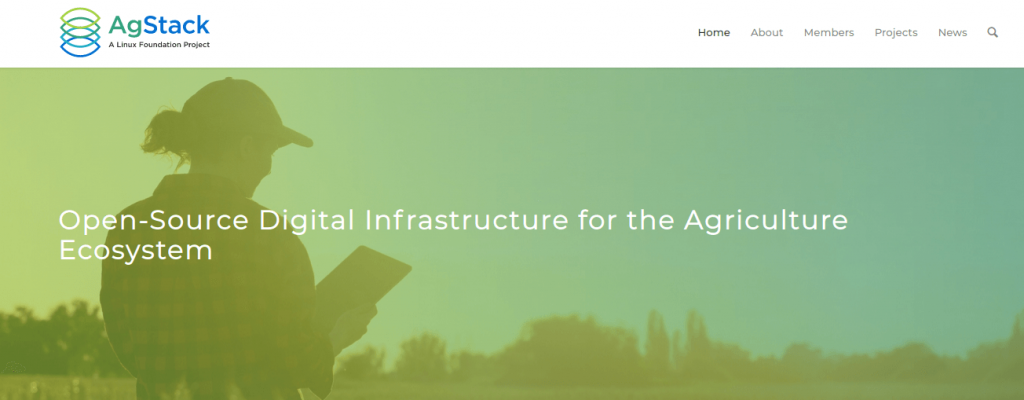
Recently, the Linux Foundation has been investing more into infrastructure projects. The latest announcement in this investment is Agstack. The main aim of this project is to create and promote the use of free and open digital infrastructure in agricultural applications.
Today, we will be exploring what Agstack is, why it exists, and the impact it may have on the future of agriculture.
What Is Agstack?
According to their release announcement:
[The] AgStack Foundation will improve global agriculture efficiency through the creation, maintenance, and enhancement of free, reusable, open, and specialized digital infrastructure for data and applications.
AgStack will use collaboration and open-source software to build the 21st-century digital infrastructure that will be a catalyst for innovation on new applications, efficiencies, and scale.
From the first paragraph, it can be interpreted that Agstack is intended to be used to create more modern and reusable infrastructure for agriculture. We can also see that it aims to act as a catalyst for the development of future digital agricultural platforms.
This statement is further supported by the Executive Director of Agstack, Sumer Johal. According to him:
“The global Agriculture ecosystem desperately needs a digital makeover. There is too much loss of productivity and innovation due to the absence of reusable tools and data. I’m excited to lead this community of leaders, contributors, and members – from across sectors and countries – to help build this common and reusable resource – AgStack – that will help every stakeholder in global agriculture with free and open digital tools and data.”
In a nutshell, Agstack is meant to create and improve the infrastructure that feeds humankind. Now that we know what Agstack is, we need to understand why it is needed in the first place.
Why Do We Need Projects Like Agstack?
In the release announcement, the Linux Foundation explains the problems currently plaguing the agriculture industry:
Thirty-three percent of all food produced is wasted, while nine percent of the people in the world are hungry or undernourished. These societal drivers are compounded with legacy technology systems that are too slow and inefficient and can’t work across the growing and more complex agricultural supply chain.
It shows how we need a better system that is open and reusable. Ultimately, promoting sustainability. This is the main reason Agstack exists: to create a more reliable way to manage agriculture and our food sources.
While it may not seem like a big deal to the average person, this initiative could prove crucial to the future of the agriculture industry.

What Impact Will Agstack Have On The Future Of Agriculture?
As was stated in the previous quote, there are too many “legacy technology systems that are too slow and inefficient” for use in the modern food supply chain. Fortunately, one of the areas that the open-source community excels in is modernizing legacy technologies.
The creation of Agstack hopefully acts as a catalyst to this process, with many agriculture projects able to benefit from it.
Wrapping Up
Agstack is looking to be a crucial part of the future of agriculture. The current technology is inadequate for the current agricultural landscape, and I believe, we need a new system.
The Linux Foundation has obviously found a need, and Agstack looks to be a good solution. Let’s just hope that it can live up to its promises.
- Even the biggest players in the Linux world don't care about desktop Linux users. We do.
- We don't put informational content behind paywall. Your support keeps it open for everyone. Think of it like 'pay it forward'.
- Don't like ads? With the Plus membership, you get an ad-free reading experience.
- When millions of AI-generated content is being published daily, you read and learn from real human Linux users.
- It costs just $2 a month, less than the cost of your favorite burger.
Become a Plus Member today and join over 300 people in supporting our work.









